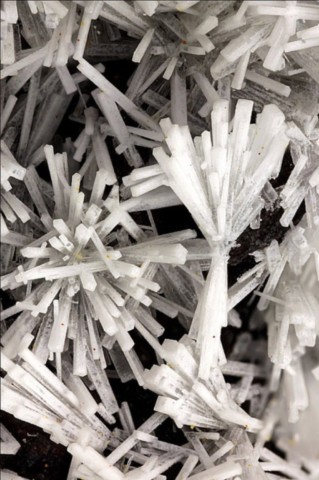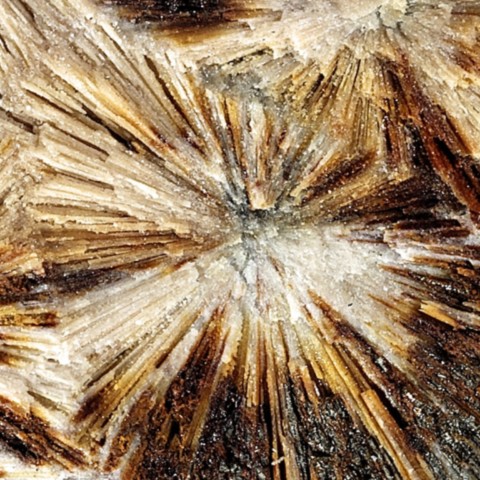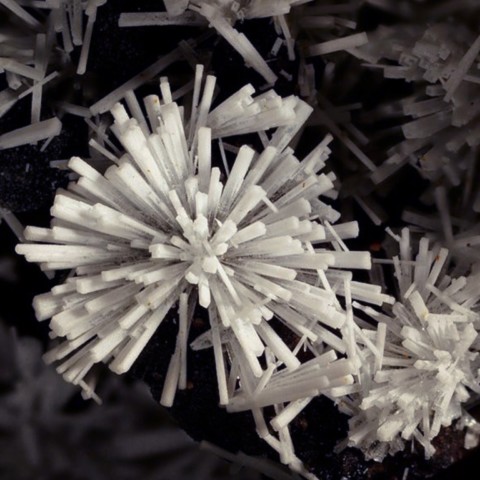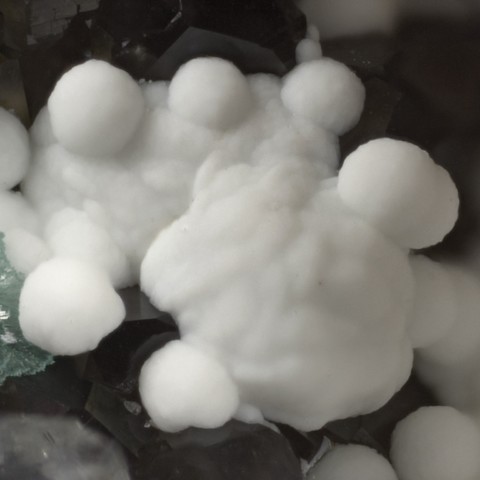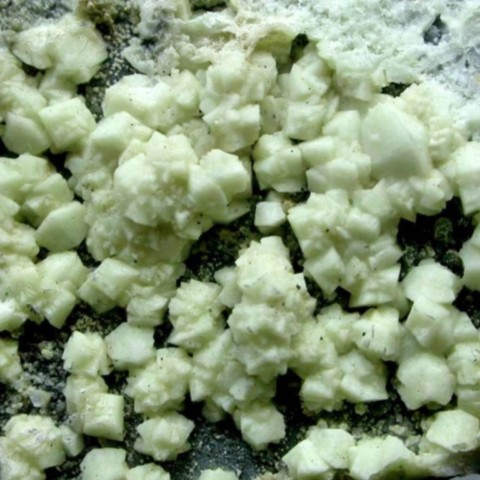 Crandallite - Encyclopedia
Crandallite - Encyclopedia
Class : Phosphates, arsenates, vanadates
Subclass : Hydrated phosphates
Crystal system : Rhombohedral
Chemistry : CaAl3(PO4)2(OH)5 H2O
Rarity : Common
Crandallite (formerly called pseudowavellite) is a hydrated calcium aluminum phosphate. It is an essentially secondary mineral which forms in the zone of supergene alteration of aluminous and phosphate rocks. Its formation environment is therefore broad : carbonatites and nepheline syenites, granitic pegmatites, various sedimentary rocks (including phosphorites), sometimes iron deposits. It is more rarely a primary mineral newly formed in anoxic marine sediments or clayey sediments in a tropical climate. It was named in honor of the American engineer Milan L. Crandall. Crandallite forms small prismatic crystals (1 mm maximum), or pseudocubic rhombohedra ; more commonly it is found in rosettes, spherules or nodular masses with a fibroradiated texture, sometimes in powdery crusts. Its color is yellow, white or gray, sometimes brown.
Main photo : Crandallite from Tom's Quarry, Kapunda, North Mt Lofty Ranges, Mt Lofty Ranges, Australia © Matteo Chinellato
Crandallite in the World
Twinning
No twin known for this mineral species.
Fakes and treatments
No fake identified for this mineral species.
Hardness : 5
Density : 2.78 to 3.04
Fracture : Irregular
Streak : White
TP : Translucent to opaque
RI : 1.613 to 1.632
Birefringence : 0,011
Optical character : Uniaxial +
Pleochroism : None
Fluorescence : None
Solubility : Acids
Magnetism : Paramagnetic
Radioactivity : None

